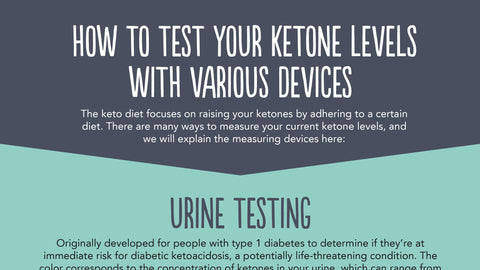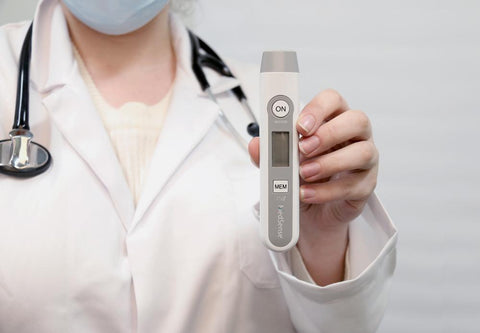One of the most interesting diets around right now seems to be the keto diet- which promises weight loss with a high-fat, and low-carb diet. Claiming that you're able to eat all the fat you want, feel no hunger (meaning with all the high fat foods, you'll never feel hungry again), boost athletic performance, and even help you to lower your blood sugar if you have type 2 diabetes, this diet seems too good to be true.
But what exactly is the ketogenic diet, and is the weight loss program right for you? Let’s take a closer look before you attempt to change your eating habits and lifestyle.
What is the keto diet?
The ketogenic diet is based on the principle that by depleting the body of carbohydrates (which is our primary source of energy), you can force the body to burn fat for fuel- maximising your weight loss potential. When you consume foods that contain carbohydrates, our body converts those carbs into glucose (blood sugar), which it may then use for energy.
Because glucose is the simplest form of energy for our bodies to use, it is always used for energy before your body burns stored fat.
When you're on a ketogenic diet, the main goal is to restrict the intake of carbohydrates so that our bodies have to break down fat for energy. When this happens, the stored fat is broken down inside our livers- producing ketons (byproducts of our metabolism). Since glucose is absent in our system, the ketones will then be used to fuel our bodies.
How can you follow the ketogenic diet?
There are a few different types of keto diets, but to achieve a state of ketosis, you have to drastically reduce the amount of carbs your body takes in. Data has suggested that the average American man over age 20 consumes 47.4% of his daily calories from carbs, whereas the average American woman over the age of 20 consumes 49.6% of her daily calories from carbs. If you're following the classic keto diet (which was used to originally manage seizure disorders), 80-90% of your calories would come from fat, 5-15% would come from protein, and 5-10% would come from carbs.
The newer, modified version of the keto diet allows you to intake protein at a more liberal pace- around 20-30% of your diet. Utilising the same carbohydrate restriction, this is the most common version of the keto diet used today. Goals for this keto diet include weight management, weight loss, and improved athletic performance.
How do you know if your body is in ketosis?
To figure out whether you’re in a state of ketosis, periodically test your urine for ketones. You can purchase ketone testing strips, or you could take a look at our Ketoscan Mini- a less invasive way to test for your ketones.
Many people associate elevated ketones with a diabetic medical emergency known as ketoacidosis- just be aware that nutritional ketosis (the one associated with while undergoing a ketogenic diet), and diabetic ketoacidosis are in fact very different.
Know about the side effects of the diet
For all the attributes of a ketogenic diet (like weight loss), there’s one big side effect you have to be prepared for: the keto flu.
The keto flu is a term that refers to the period after you start the diet when your body is adjusting to burning fat for energy. Within the 7-10 days, you may feel start to feel weak, and lethargic in your limbs. You may also deal with mental fog, and walking up the stairs may often prove tiresome. More often than not, the keto diet may cause constipation, or potentially diarrhoea, because of a change in fibre intake.
For those reasons alone, if you're attempting to start on the keto diet, you should choose a week where you have some free time, and you won't be distracted by work and deadlines- just choose a period of time where you can rest when needed. In light of this, you should also go easy with exercising- your body will be adjusting to burning more fat instead of carbs for fuel.
Also, be sure to check your relationship with fat- the keto diet is fat heavy!
Some studies suggest that replacing saturated fat with polyunsaturated fat (and avoiding unhealthy trans fat) is important for mitigating heart disease risk, while others suggest that total fat and types of fat weren’t associated with cardiovascular problems. It becomes conflicting while deciding what to eat, because of conflicting studies. Not to worry though, if you remember that food is more than a single nutrient, the overall quality of ones diet is what really matters.
Find out more about the KetoScan Mini Ketone Breath Tester on our website:
References:
- https://www.mayoclinic.org/healthy-lifestyle/weight-loss/in-depth/low-carb-diet/art-20045831?pg=2
- https://www.hsph.harvard.edu/nutritionsource/carbohydrates/carbohydrates-and-blood-sugar/
- https://www.hsph.harvard.edu/nutritionsource/what-should-you-eat/fats-and-cholesterol/types-of-fat/
- https://www.cdc.gov/nchs/fastats/diet.htm
- https://medlineplus.gov/ency/article/000320.htm
- https://www.healthdirect.gov.au/ketogenic-diet
- https://www.ncbi.nlm.nih.gov/pmc/articles/PMC4744652/
- https://www.healthline.com/health/type-2-diabetes-ketogenic-diet






